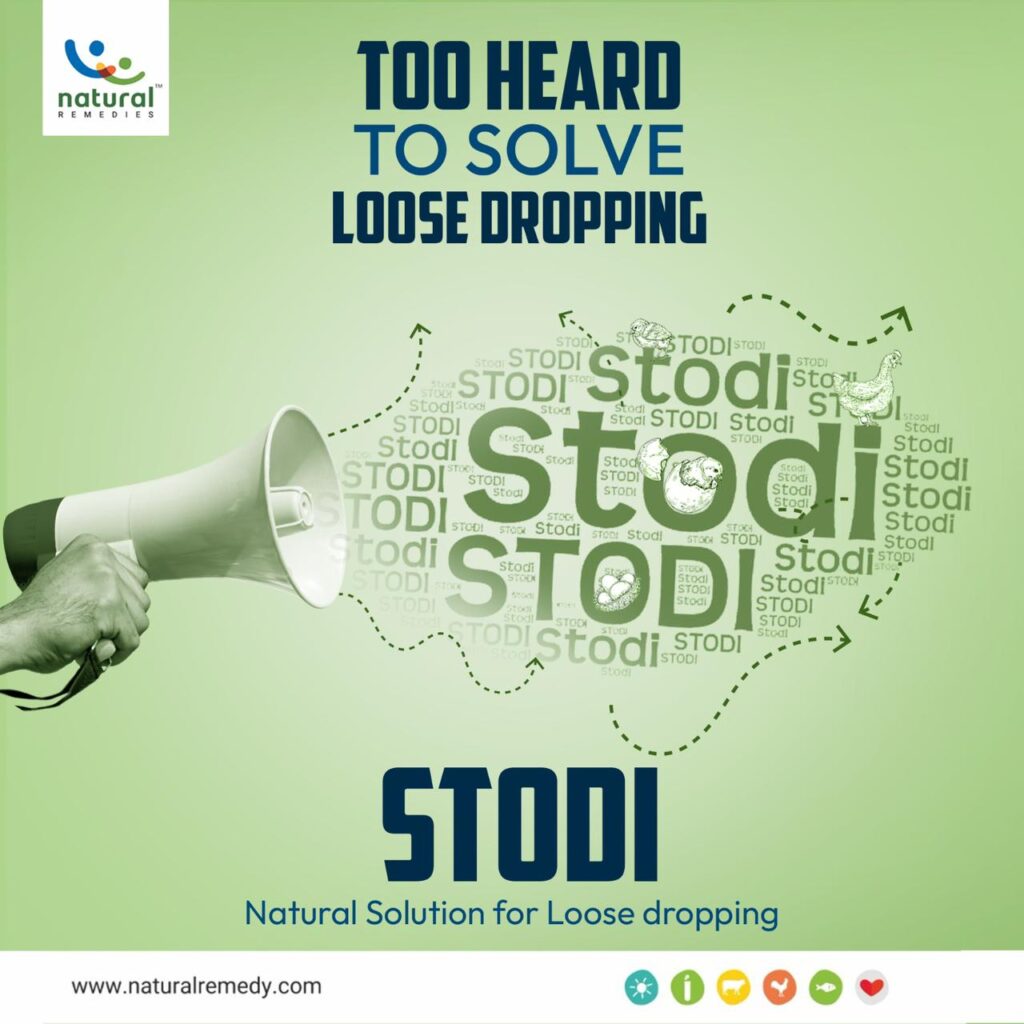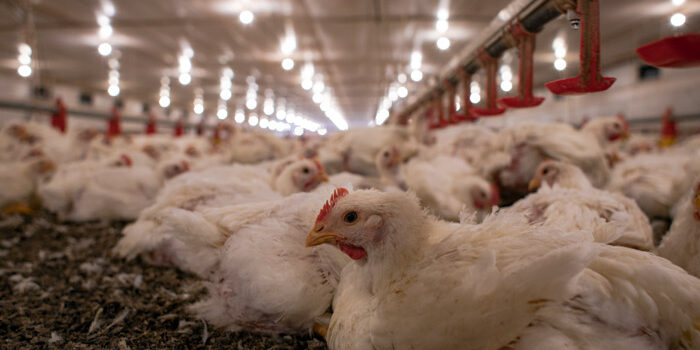Introduction: In the world of poultry farming, two significant concerning factors are litter ammonia and relative humidity. The presence of ammonia gas released by uric acid decomposition in bird droppings is referred to as the litter ammonia level. High quantities of litter ammonia may negatively impact the respiratory system, eyes, and feet, resulting in decreased production and increased mortality rates. Relative humidity, on the other hand, refers to the amount of moisture in the air. Maintaining adequate humidity levels is critical for preventing pathogen growth and infection.
Poultry excreta comprises undigested feed protein and uric acid, which microbial enzymes convert it to ammonia (NH3). Several litter characteristics influence this conversion, including pH, temperature, oxygen, moisture concentrations, and substrate availability. The recommended limit for ammonia in a chicken shed is less than 10 ppm, however, up to 25 ppm is not detrimental. Ideally, the relative humidity should range between 50 and 70%. The rainy season, defective foggers, insufficient ventilation, water leaks, and other factors all contribute to increased humidity inside the shed.
Ammonia levels and humidity in poultry houses are interconnected. High relative humidity can exacerbate the adverse effects of high blood ammonia levels in poultry. In humid environments, more NH3 may be dissolved in the air droplets and inhaled into the blood during respiration by birds, consequently increasing the blood ammonia content. When ammonia gas is exposed to moisture, it reacts and forms a corrosive solution called ammonium which causes harm to birds. Additionally, high humidity can hinder the evaporation of moisture from the litter, causing it to retain more ammonia.
Deleterious Effects on Poultry:
- Respiratory Issues: High levels of ammonia in the poultry house air can cause respiratory problems to the birds. Ammonia gas affects the trachea’s mucosal surface, causing paralysis of cilia, sometimes deciliation of epithelial cells, and causes necrosis of the mucosal epithelium.
- Foot Lesions: The constant exposure of poultry to ammonia can cause severe foot lesions by causing chemical burns on the foot pads of birds, leading to painful and debilitating footpad dermatitis.
- Eye Lesions: High concentrations of atmospheric ammonia for a prolonged duration causes irritation, conjunctivitis, and damage to the cornea of the eyes. Swelling and reddening of the eyelids, irritation, reddening of the conjunctiva and nictitating membrane, and partial or complete closure of the eyes are common clinical signs.
- Reduced performance.
How to prevent it:
Along with farming management like dietary management, stocking density, proper ventilation, house temperature, litter management, etc., other supplements like Phytogenic Feed Additives can be supplemented in a poultry diet. A phytogenic feed additive reduces the gut inflammation caused by stressors and maintains gut integrity, resulting in better nutrient digestibility in birds. In addition, it helps to maintain the homeostasis between beneficial and harmful gut microflora which would minimize the adverse effect of harmful bacteria on the gut. This ultimately leads to a reduction in the excretion of undigested and unabsorbed nutrients through feces from a healthy gut, which means less nitrogen excretion.
 Standardized Polyherbal Formulation containing fruit rinds of Punica granatum, aerial parts of Andrographis paniculata, bark of Acacia nilotica, fruits of Terminalia bellirica, and bark of Holarrhena antidysenterica has shown to be an effective solution for loose dropping. In various studies, it has been found that supplementation of this polyherbal formulation has significantly reduced litter nitrogen (g/100g of litter) as compared to the group without supplementation. Phytogenics of this polyherbal formulation (PHF) maintains the gut integrity and peristalsis movement of the gut which increases the time for the protein and other nutrient utilization by the birds. This increased protein utilization leads to reduced excretion of nitrogen which in turn decreases the production of ammonia levels in litter. Along with this PHF has been shown to improve the gut microbiota level and gut immunity of the bird poultry.
Standardized Polyherbal Formulation containing fruit rinds of Punica granatum, aerial parts of Andrographis paniculata, bark of Acacia nilotica, fruits of Terminalia bellirica, and bark of Holarrhena antidysenterica has shown to be an effective solution for loose dropping. In various studies, it has been found that supplementation of this polyherbal formulation has significantly reduced litter nitrogen (g/100g of litter) as compared to the group without supplementation. Phytogenics of this polyherbal formulation (PHF) maintains the gut integrity and peristalsis movement of the gut which increases the time for the protein and other nutrient utilization by the birds. This increased protein utilization leads to reduced excretion of nitrogen which in turn decreases the production of ammonia levels in litter. Along with this PHF has been shown to improve the gut microbiota level and gut immunity of the bird poultry.
In conclusion, the combined impact of ammonia and humidity in the world of poultry farming underscores the critical importance of maintaining a balanced and controlled environment for the well-being and productivity of the birds. High ammonia levels in poultry houses can lead to a range of deleterious effects. Phytogenics of polyherbal formulation have been shown to reduce the ammonia level in litter with improved nutrient utilization and gut microbiota balance.
Authors:
- Dr. Chandan Chatterjee – Marketing Manager and
- Dr. Jagritee Singh – MT (Marketing)
References Chigwada, J., Mazunga, F., Nyamhere, C., Mazheke, V. and Taruvinga, N., 2022. Remote poultry management system for small to medium scale producers using IoT. Scientific African, 18, p.e01398. Sheikh, I.U., Nissa, S.S., Zaffer, B., Bulbul, K.H., Akand, A.H., Ahmed, H.A., Hasin, D., Hussain, I. and Hussain, S.A., 2018. Ammonia production in the poultry houses and its harmful effects. Int. J. Vet. Sci. Anim. Husb, 3(4), pp.30-33. Weaver Jr, W.D. and Meijerhof, R., 1991. The effect of different levels of relative humidity and air movement on litter conditions, ammonia levels, growth, and carcass quality for broiler chickens. Poultry science, 70(4), pp.746-755.







